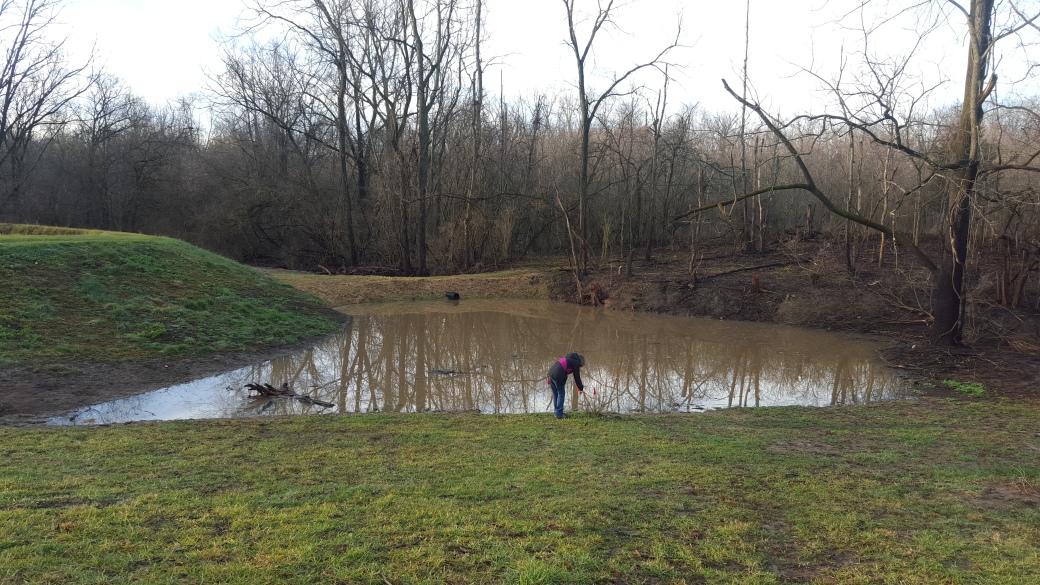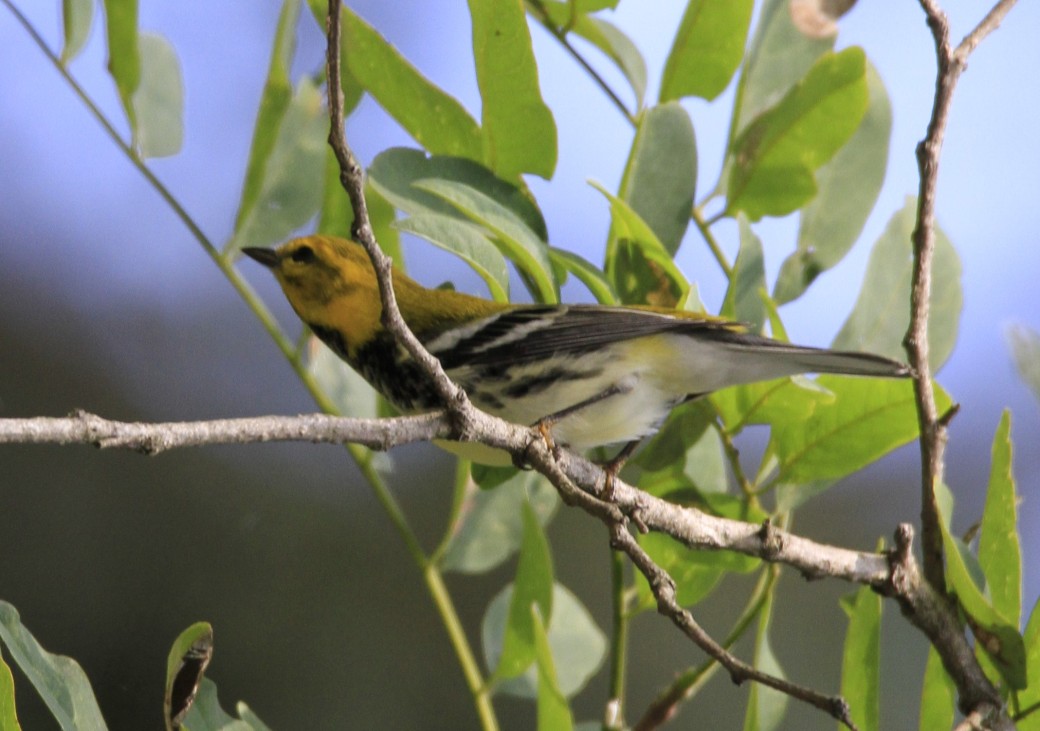“Why would you want a marsh? Aren’t they just a mosquito breeding ground?”
With our marsh turning a year old, we thought we would celebrate by showing you some of the life in and around the marsh over this past year.
The marsh was completed October 24, 2015.  Shortly thereafter, a good fall rain had the marsh full, and winter set in.
Shortly thereafter, a good fall rain had the marsh full, and winter set in.

Feeder Creek

Buried beneath ice, we could do nothing but study, think, and plan. We spent countless hours studying the correct native plants to put into the marsh, as well as which fish would be the best mosquito control.
In April we stocked 200 fat head minnows, to eat mosquito larvae.
By early May the marsh was bursting with life! Dragonflies filled the air, frogs and toads croaked, and about every type of water bug imaginable could be seen paddling, diving and swimming in the water. Water plants had even taken up residence. We were amazed! After planning and studying all winter, most of the native plants we were planning to introduce were already there!
May also brought the spring migration! Solitary and spotted sandpipers stopped in to eat along the muddy banks, egrets and herons flew in and out, and by the second weekend in May bird song filled the air. Blackburnian, Wilson’s, Nashville, golden-winged, and yellow-rumped warblers, vireos, redstarts, gnatcatchers, phoebes and indigo buntings were everywhere.
By early June the birds had migrated through to their nesting grounds, many traveling as far as Canada to have families. The gnatcatchers, phoebes and indigos stayed with us, and as spring turned to summer we noticed a remarkable change. In past years we could not be outside in the evening without mosquito repellent. This year we were bitten by only one mosquito all summer – and it was when we went deep into the woods that surround our property. The minnows, marsh birds and dragonflies kept the mosquitoes so controlled we didn’t get bitten.
By late July the marsh was only about two feet deep. Much of the spring rains had been absorbed by the earth. But that is another great function of a marsh. They act as the planet’s liver, filtering out impurities as the water percolates into the planet’s biofilter.
At one time, 25% of our planet was marsh. When heavy rains came, the marshes would fill and then slowly release water back to our planet. Flooding almost never happened. Droughts were rare; wildlife abounded. Today, pretty much whatever chemicals we put on our yard have no collecting place; they run into the nearest drainage ditch and flow directly into the ocean. Our marsh is one step toward a healthier planet.
The fall migration began in late August, and we have been amazed at the warblers which have stopped in to visit on their journey south!

The last year has been one of constant discovery.







 Shortly thereafter, a good fall rain had the marsh full, and winter set in.
Shortly thereafter, a good fall rain had the marsh full, and winter set in.







